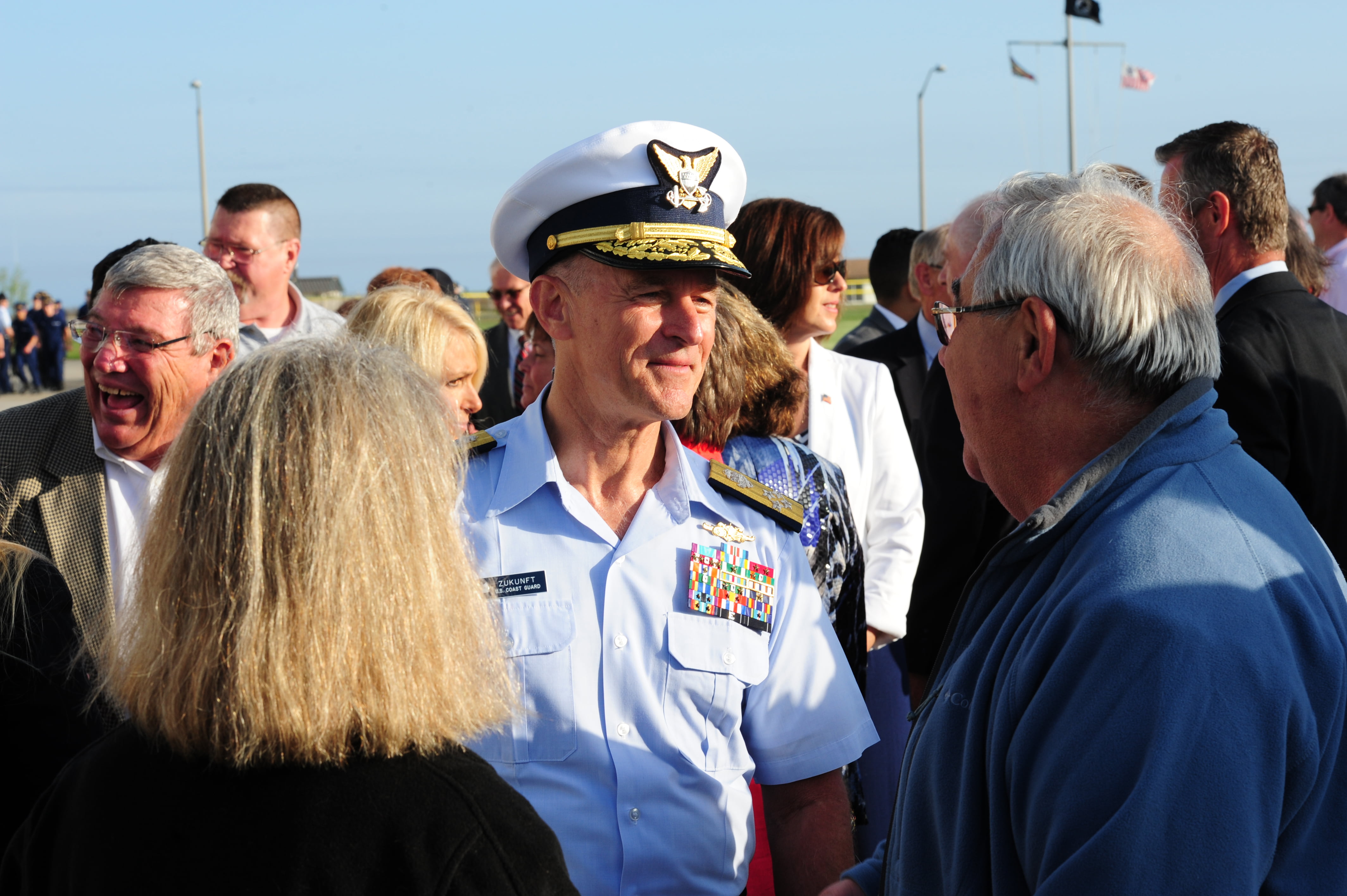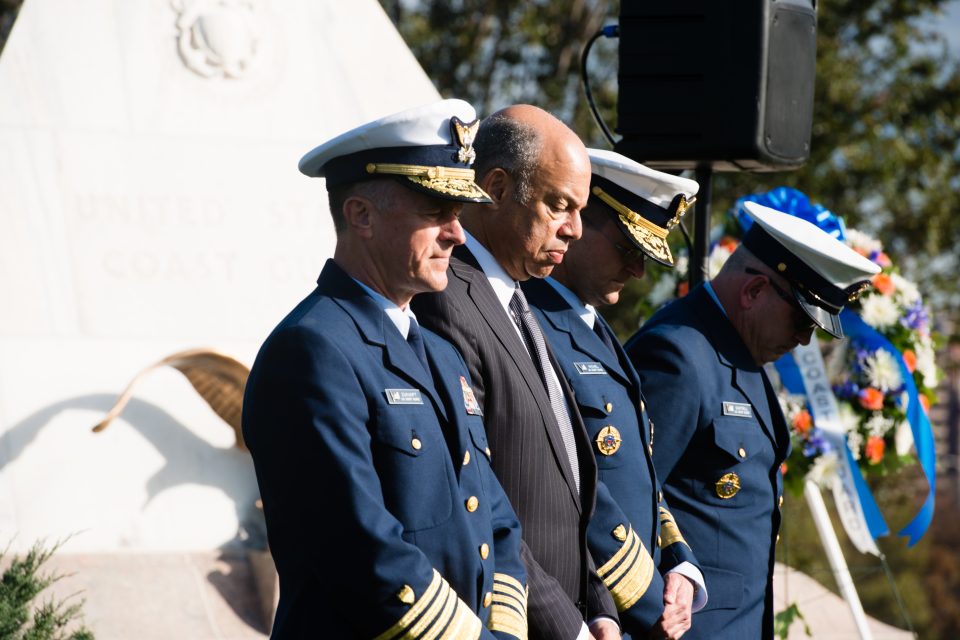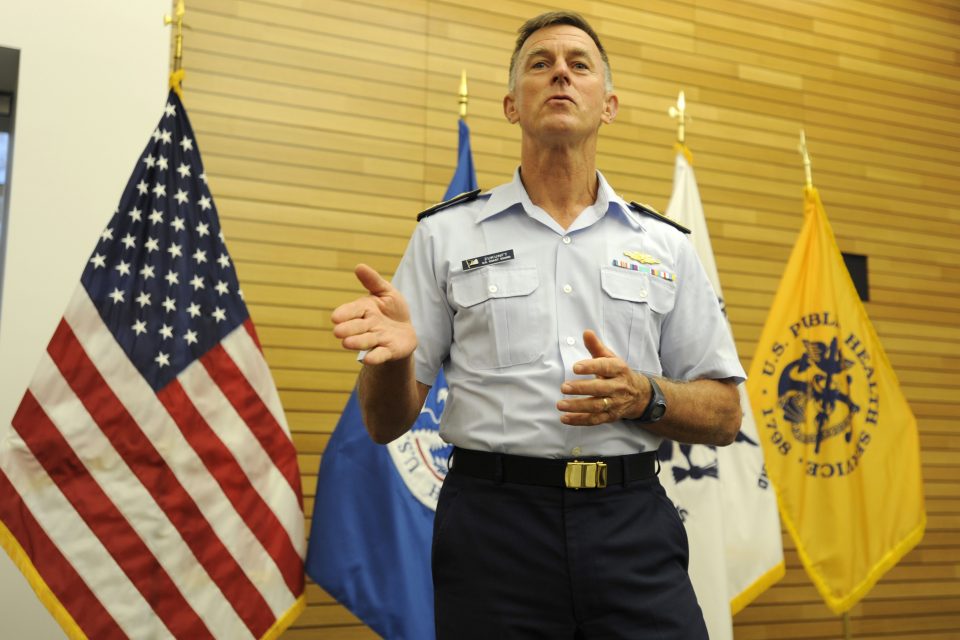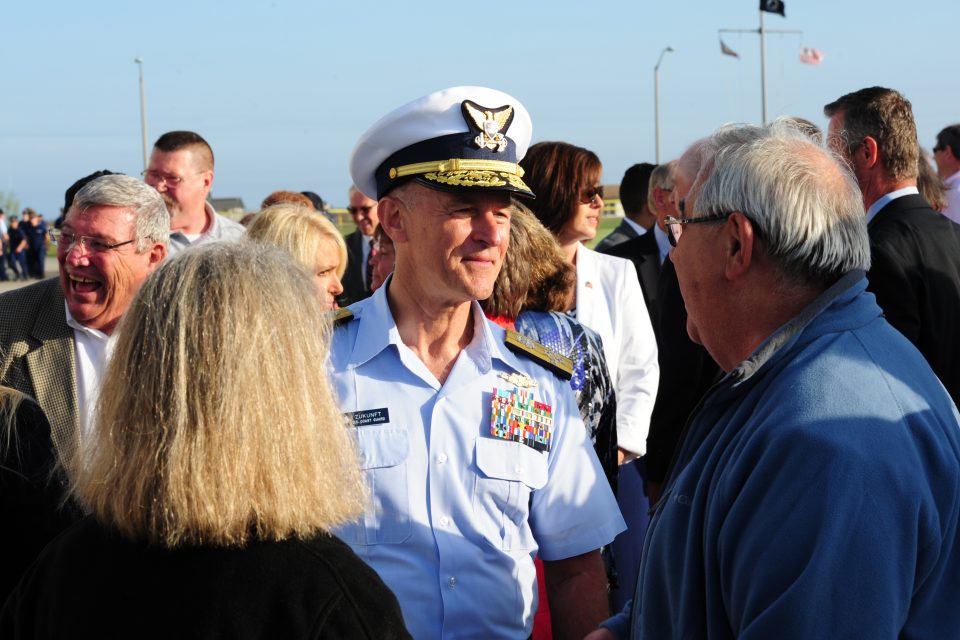2016-12-16 By Robbin Laird
The last time I met with Admiral Zukunft was when he was working at the USCG headquarters in California and responsible for USCG Pacific operations. Later he would become Commander, Coast Guard Pacific Area as well.
We had a chance to discuss his perspective on the way ahead for the USCG in his office in Washington DC on November 30, 2016.
Obviously, the election of a new President and the formation of a new Administration will provide a new context for the USCG and its evolving role, but the emphasis which President-elect Trump has put on border security and defense and the decision to appoint General Kelly as head of the Department of Homeland Security could well provide an expanded context for the USCG.
The USCG plays a crucial role in Western Hemisphere security and defense and certainly General Kelly saw on a regular basis the crucial role the USCG has played in the region and shaping extended security and defense for US borders.
For Admiral Zukunft, the USCG’s role in Western Hemisphere security and defense has been significant, specifically as other DOD and security assets have deployed to the Middle East and the Pacific to deal with other global issues.
The USCG today is quite different from 20 years ago as it operates now within an intelligence and operational web which provides a very different approach to deploying assets up against threats.
According To Admiral Zukunft:
“A key requirement for mission success is leveraging intelligence.
“We work intelligence across our agencies and internationally.
“This is crucial to provide risk informed decision-making.
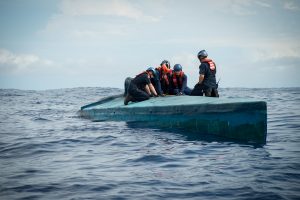
“We have constrained resources and we need to prioritize threats across the spectrum of operations.
“For example, in dealing with the afloat drug traffic we focus on the transit zones and work our ability to find choke points on the water and ashore to deal with the drug threat.
“We work with a number of key governments in the Western Hemisphere to shape more effective intervention.
“If you look at DOD’s statement of key priorities, they are not focused on the Western Hemisphere.
“We have the responsibility by default and design.
“And a key part of homeland security is the security of the conveyer belt of maritime trade, which translates to about $4.5 trillion per year, which flow through our waterways and ports.”
Question: Clearly the limitations on resources is a key challenge but your approach allows you to get maximum return on investment by targeting the resources. How would you highlight that challenge?
Admiral Zukunft: “It is a challenge.
“The Navy’s Perry-class frigates have gone away. On the best of days you have three Coast Guard ships in the Caribbean. That is your entire force to deal with threats in that region.
“We have 80% awareness on the best of days, and perhaps we can target 10% of that drug flow.”
Question: A key asset for recapitalization is your new offshore patrol boats.
Could you discuss their role?
Admiral Zukunft: “We have been struggling to get a program of record of the national security cutter across the finish line, and this is really the biggest acquisition for our service to provide the presence and enforcement assets which can provide for enhanced safety in security in our operations worldwide, but notably for extended border security for the United States.”
Question: The USCG has a much greater role in security than generally recognized because of your legal authorities.
Could you comment on this aspect of the USCG role?
Admiral Zukunft: “We operate not just on our own vessels but we have a presence on the vessels of the US Navy and other nations.
“We are the only entity that has authorities to do anything about the security threats which we are prosecuting at sea.
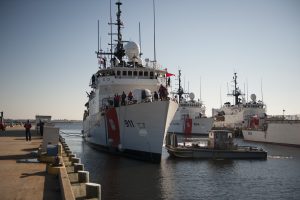
“And we deal with a number of foreign governments in the Western Hemisphere who view the USCG as a key partner in shaping more effective Hemisphere security as well.
“When you lay a map of the world flat and you look at where the USCG has authority, it reaches right up to the territorial seas in the countries surrounding the US and, in many cases, inside the territorial seas.
“With the agreements we have now worldwide we do not have to wait till an anomaly in the manifest of cargo ship alerts us to a threat and simply have to wait till it shops up.
“We can intercept at sea and do a security check”
Question: With regard to the Arctic, there is an obvious need to ramp up US presence and the resources to provide for presence.
How do you view the way ahead?
Admiral Zukunft: “We clearly need a new icebreaker.
“We’ve written the operational requirement documents that make the icebreaker a floating command and control platform.
“We can put a skiff on it. It’s also an instrument to enforce sovereignty.
“Rather then ice hardened, you have actually an ice breaking capability up there as well.
“It is extremely hard to predict what that area’s going to look like in 20, 30 years but without a new icebreaker we will be observers more than participants in shaping Arctic safety and security.
“An independent High Latitude analysis confirmed that we need three and three – three heavy and three medium icebreakers.
“We have helped stand up an Arctic Coast Guard Forum based on the Pacific Coast Guard Forum model.
“This allows the key national stakeholders in Arctic safety and security to work together where possible to enhance safety and security in this dynamic region.
“We are looking to do a mass rescue exercise in 2017 around Iceland that will bring in Denmark and other NATO partners for a collective security effort.
“And to be clear, the USCG is the key sea service for the Arctic, the USN has in effect devolved Arctic security responsibilities to the USCG.”
Question: It seems your focus on borders is on a broader rather than narrower concept?
Admiral Zukunft:”It is.
“Rather than having a goal line defense concept, we have a Offensive strategy.
“When I think of a border, it begins at the territorial seas of the Pacific and Caribbean nations, which we deal with.
“We have the ability to detect anomalies, we have authorities, and then when it comes down to the resources to be able to target that threat and meet it on an open playing field, rather then a goal line defense.
“You might call this a layered defense strategy, but I prefer to call it an offensive approach whereby the USCG can leverage its authorities as far removed from the goal line as possible and practicable.
“For example, I have discussed with the CNO the concept that we would create a permanent USCG presence in the South China Sea and related areas.
“This would allow us to expand our working relationship with Vietnam, the Philippines and Japan.
“We can spearhead work with allies on freedom of navigation exercises as well.”
Question: Clearly, you need more resources to expand presence, but the sustainability piece is often lost sight of.
What are your thoughts on the sustainment piece?
Admiral Zukunft: “There is usually much less focus upon sustainability but there are serious shortfalls which need to be addressed.
“We see our role as providing a key contribution to national security in dealing with non-state actors, whether is the threat of piracy, transnational crime or drug dealing.
“The USCG provides unique authorities with titles 10 and 14 to provide for a unique instrument of security, particularly when one is looking at a more offensive approach to protecting our borders.”
Question: Clearly, more platforms accompanied with better ISR and C2 is a key requirement moving forward, but what about the potential for robotic vehicles?
Admiral Zukunft: “It would make sense for UUVs to be part of the USCG future, and we would start with the Arctic as a key area for such operations, to gain enhanced situational awareness in the region.”
https://sldinfo.com/wp-content/uploads/2016/12/PaulZukunft.pdf
Editor’s Note: A harbinger of things to come is suggested by this October 10, 2014 news note from the National Defense University.
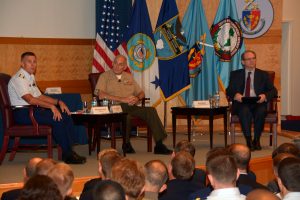
“On Tuesday 7 October, the United States Coast Guard (USCG) and United States Southern Command (US SOUTHCOM) presented “A Conversation on Emerging Challenges in the Western Hemisphere” in Lincoln Auditorium at National Defense University. The event featured a rare discussion between two four-star leaders; Admiral Paul F. Zukunft, Commandant, USCG, and General John F. Kelley, Commander, US SOUTHCOM, both of whom highlighted the importance of the inter-agency approach to Western Hemisphere challenges.
Both leaders possess broad career experience coordinating across government. General Kelly comes to United States Southern Command from his previous position as the Senior Military Assistant to the Secretary of Defense from March 2011 to October 2012. In 2010, Admiral Zukunft served as the Federal On-Scene Coordinator for the Deepwater Horizon Spill of National Significance where he directed more than 47,000 responders, 6,500 vessels and 120 aircraft during the largest oil spill in U.S. history.”
And with regard to new USCG icebreakers, the official position is laid out here:
https://www.uscg.mil/acquisition/icebreaker/
The Coast Guard requires at least two new heavy icebreakers to ensure continued access to both polar regions and support the country’s economic, commercial, maritime and national security needs.
The operational polar icebreaking fleet currently includes one 399-foot heavy icebreaker (Coast Guard Cutter Polar Star, commissioned in 1976) and one 420-foot medium icebreaker (Coast Guard Cutter Healy, commissioned in 2000). These cutters are designed for open-water icebreaking and feature reinforced hulls and specially angled bows.
Polar Star underwent a three-year reactivation and returned to operations in late 2013. Since then, Polar Star has completed three Operation Deep Freeze deployments to resupply McMurdo Station in Antarctica. The Coast Guard expects Polar Star to remain in service through approximately 2020 to 2023.
The Coast Guard also has a second heavy icebreaker, Coast Guard Cutter Polar Sea, which was placed in commissioned, inactive status by the service in 2011. The Coast Guard is evaluating options to reactivate the ship, parts from which were used to reactivate Polar Star.
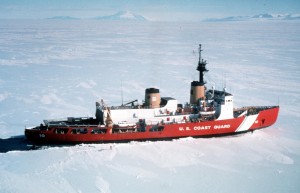
Why this program?
The United States has vital national interests in the polar regions. Polar icebreakers enable the U.S. to maintain defense readiness in the Arctic and Antarctic regions; enforce treaties and other laws needed to safeguard both industry and the environment; provide ports, waterways and coastal security; and provide logistical support – including vessel escort – to facilitate the movement of goods and personnel necessary to support scientific research, commerce, national security activities and maritime safety.
The Coast Guard will need a minimum of two new heavy icebreakers to ensure national year-round access to the polar regions and to provide some self-rescue capability.
How is the Coast Guard addressing the need for more polar icebreaking capability?
The Coast Guard is in the Analyze/Select phase of acquiring a new polar icebreaker, which involves evaluating acquisition approaches and assessing the merits of each approach.
The service’s polar icebreaker acquisition program settled operational requirements informed by 11 interagency stakeholders in January 2016, published the requirements in an industry data package, and in March 2016 held an industry day attended by more than 90 organizations.
Future industry engagement, including solicitation of commentary on a draft request for proposal, is projected as specifications develop and the program progresses.
The service intends to begin production activities in 2020 under an accelerated acquisition timeline.


